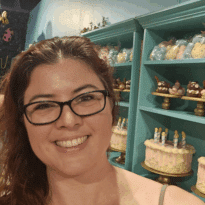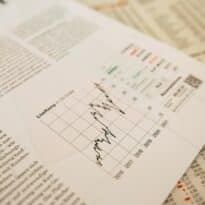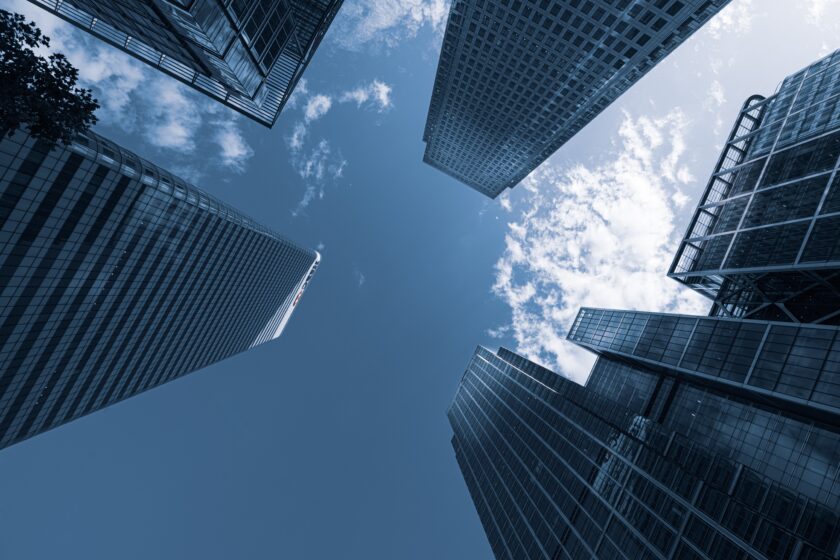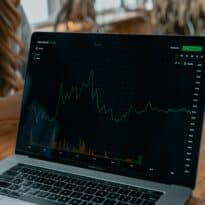This week’s Investment Q&A is with Elite Rated manager David Ennett, manager of the Artemis Global High Yield Bond fund. We’re delving into the nuances of the high yield bond market with David explaining that although the risker CCC-rated bonds get most of the headlines, they actually make up only a small portion of the market, leaving plenty of opportunities for active managers to take advantage in other areas.
(Recorded 7 August 2023)

With current higher interest rates pushing up the cost of borrowing for people and companies, with people spending less and the possibility of a recession, does that make your asset class an even riskier place to invest today?
Within high yield, we have those bonds and companies that are just below investment grade, called BBs. BBs are just one rung below investment grade and they tend to be large, cash-flow generative, good companies that I think most people would be very comfortable with lending to.
At the other end of the spectrum, we have our CCCs which are probably what a lot of people immediately think of when they talk about high yield. These are the riskiest companies where there are severe doubts about their ability to repay. But the CCC part of the market is only about 7.5% – 8% of the market, so, although it’s probably 98% of the high yield headlines you’ll see, it’s in fact a very small part of the market. BBs are currently slightly more than two thirds of the market, and it’s quite a nice boring part of the market. And when you’re lending money, being in a boring part of the market can be a good thing. But just to illustrate how different they are, the one-year default probability of a BB is 0.6% but a CCC has a 26% chance of going bust in any one year.
So, using the term ‘high yield’ sometimes misses some of the nuance; some of this is very low risk and some of it is extremely high risk. And really for us, the key for this asset class and deciding how much risk we want to take for our clients, is which part of the high yield market to invest in. And we think you need to be quite active and really choose which parts of the market you want to be in. By doing that, you can tailor the amount of risk you take for the outlook.
But high yield isn’t all bad news; by taking on this default risk, you do get a much higher yield in return. And the yield on the whole market – depending on which index you look at – is between 8% – 9%. But you are also being asked to take much less interest rate risks. If you pick the right spot in high yield, you’re pretty well set up to take a little bit of credit risk or a default risk, and really not take that big interest rate risk because of the inflationary environment.
Does this fund invest across that whole spectrum of ratings?
Yes, but at the moment we only have a very, very small exposure to CCC-rated securities. But if I go back to times like right after the Covid crisis, right after the initial lockdowns in March / April 2020, we put a lot of CCC into these funds because the market was extremely cheap. And we made a lot of return out of doing that, but most of the time we prefer to stick to – and our sweet spot is – BB and some B-rated securities. We call that performing credit, so these are credits that might have a little bit more risk and often that risk is just because they’re not as massive and diversified as investment grade companies are. And we think the risk / reward is really good in those securities as opposed to CCCs.
As a global fund, is there a region that potentially has better value and opportunities than another at the minute?
We very much have a developed market focus, so that’s US and European exposure, we don’t tend to go into emerging markets. Currently, we have big exposures in US and Europe, but I have to say one of our favourite regions at the moment is the UK. We see some extraordinary value here. There was a huge amount of negativity that came into the UK market at the end of last year, which has created some terrific opportunities. We think that the market is being overly cautious. One of the reasons you see that, is that the UK high yield market is only around 3% of global high yield. So, for the vast majority of investors in US dollars or euros, which is the rest of the market essentially, it’s quite easy to overlook the UK and the UK doesn’t have the massive growth or inflation dynamics that make it jump off the page for a lot of global investors. But if you are prepared to do the credit work and look for the opportunities that are here, it’s a very good background for us, we think.
You have some unique holdings in the portfolio, from lottery operators to Legoland, as well as more commonplace financial services and apparel companies. Can you give us some background on one of the newest additions to the portfolio, Crocs, Inc?
Crocs is an extraordinary business. There’s quite a bit of the footwear and apparel sector in high yield, and, in general within our funds, we tend not to like this sector because we like companies that have a lot of pricing power and brand equity that can drive economic returns. And if you are at the mercy of retailers and footfall, then companies can come under pressure. But what we see with Crocs is a company that in the first instance had an amazing time during Covid. Millions of people were confined to their homes and to console themselves to the realities of the pandemic, they decided that they could wear this kind of footwear working from home. And this ongoing casualisation of fashion is a secular trend, we think, not just a cyclical fashion one.
In 2019, Crocs did just on $1 billion of sales, and in the last year they’ve done nearly $4 billion of sales. Now for us – and you’re right to note that it was a recent addition to the fund – something we need to watch for as well is, were they a one-off Covid winner? There are a lot of businesses – and Zoom is the classic one that had a fantastic Covid, and that growth has all withered away – but in Crocs we see a business that has permanently expanded the size of its addressable market. It’s moved from its traditional Crocs, into sandals and their accessories business as well. What’s interesting is that they’ve been able to maintain not only the size of that market, but they’re continuing to grow while the rest of the footwear market has stabilised – and some parts of it are down, if we look globally.
Given the huge boost the company saw during the pandemic period, in 2021 the management decided to buy another brand with these supernormal profits, to try to push through their distribution network. And that’s why they came to the high yield market. And again, this is why I think this is a good example because it illustrates the opportunity in the high yield market where you have a company like Crocs, which has an equity market cap of nearly $7 billion coming to the high yield market to issue two bonds, to do a piece of M&A. It bought this business, which has been hugely successful and, in the last year, they’ve generated free cash flow of about $750 million, of which every cent has gone to repaying debt. So, lending to a company that wants to do a good sensible transaction and then having that company deleverage or payback debt to us, is a very good dynamic and, you know, Crocs has more than 30% margins, it’s hugely profitable, and at the moment, it’s running very low levels of debt relative to its earnings.
And why we like situations like this is, if I look at the index, you have some huge companies in there; you have Ford Motor Company, you have Petrobras [Petróleo Brasileiro S.A.] and PEMEX [Petróleos Mexicanos], which are big state-owned oil companies. They can make up 3% and 4% of the high yield market whereas Crocs is three basis points, not even a rounding error within the global high yield market, but we really like this business because of its individual characteristics; it’s very high margin, has fantastic growth and has this amazing pricing power.
So, when people say, do you like high yield, well, there’s lots of high yield I don’t like, but then there are some fantastic opportunities in there and that has to be your approach in this market because inflation is high, consumers are coming under pressure, so, a company that has pricing power and that also comes in at a lower price point than a lot of other fashion labels is well able to navigate this environment. We’ve been very happy with that investment since we made it earlier this year, and it certainly has been additive to fund returns since then.
Typically bond funds held in a wider investment portfolio are there to add diversification, but the global high yield tends to be riskier and somewhat correlated to equities as well. So, how does a fund like this fit into an investor’s portfolio?
I think a lot of investors don’t have a natural place mentally to place high yield. Equities are equities and we all understand small cap, large cap, EM etc. so that’s kind of straightforward for people. And then within bond world, we think of bonds as being government bonds or investment grade bonds, which are there as a nice stabiliser, offering a little bit of income. But what bonds really add to a portfolio is interest rate exposure because they’re long duration. High yield literally sits in the middle of that equity and traditional fixed income space, offering the following proposition: we take some capital, we expose it to some credit risk, we invest it into some companies like Crocs, like Ford, and others mentioned previously. They have a little bit of risk associated with them, which means we’ll get an enhanced level of yield because you’re taking that risk. You get paid a lot more lending to Crocs than you do lending to Nestlé S.A or Unilever Plc for example. In return, because the high yield market is dealing with riskier companies, put bluntly, you’re not going to lend to a very risky company for 20 years because so many things can happen in that time. What the high yield market says is, ‘Hello risky companies, we’re happy to lend to you, but a) you have to pay us a lot, and b) we’re not going to do it for a very long time’. So, the average duration is around four years, which is very low. So, you’re not lending to companies for a long period of time, but you’re lending to riskier companies to do that.
So, for investors in this environment where inflation’s higher and they want to generate some yield, they want some income, they have two choices: either they lend to a safer company or a government for a very long period of time, or they can lend to a riskier company for a short period of time. Investors have to decide whether inflation might be a little bit stickier than people thought, therefore there’s a lot of danger lending for a very long period of time, because if interest rates go up, the longer you’ve lent to somebody, the more the price of that bond will go down as rates increase. Or they might say, actually, if I’m worried about inflation being a little bit stickier, that’s actually a good environment for corporates, particularly high yield corporates, which tend to be what we call quite capital intensive; they’re not big growth stocks, they’re kind of boring companies that just produce a lot of cash flow and it’s actually a good environment for them. So, we think that trade off is a very good one to have at the moment.
If you get really negative and think that we’re going to go back to 2% inflation and we’re going to have a recession and high unemployment, then you are probably better off owning those really long-dated exposures like investment grade corporates or government bonds. But, if you think we’ll carry on with inflation rates a little bit higher than we’d like, but the economy doesn’t completely fall off the rails, then getting that 7-8-9% yield coming to you constantly that you can compound, we think is fantastic risk return.
The first half of the year has been dominated by inflation and general uncertainty, do you think that the second half of the year is going to be more of the same?
If we go back to March ’22 when we started getting some of those really shocking inflation prints and we saw all bond markets and risk markets react pretty negatively to that, and with big drawdowns in government bond markets, corporate bond markets and high yield markets, what we’ve seen over the past year is a growing acceptance that we’re in a higher inflationary regime. And behind that, we’ve had central banks very aggressively hiking interest rates; we had the Bank of England recently add another 25 basis points to the UK base rate, and we might get another one, possibly two hikes, acting aggressively to try and bring inflation down. So, I think the market has moved on from inflation denial a little bit.
Where we are now is really confusing a lot of people; yes, global earnings have come off a little bit, but consumers are still in good shape, the labour market is still very tight and growth is still looking pretty good, with most recession forecasts wound back a little bit.
I think the second half of the year might see that growing realisation that the downside mightn’t be as pronounced as feared. But against that, you still have a lot of fear of the lag. So, you hike rates a lot now and the real impact isn’t felt for perhaps 12 -18 months; this was the traditional kind of thinking but we’ve been hiking for at least that now and there’s a little bit of a slowdown, but certainly not nearly as much as I think markets would have been led to believe. And I think if we got into our time machine and went back 18 months and said that the bank of England will hike rates 14-15 times in a row, and we’d be where we are in terms of unemployment and growth, no one would believe you.
I think people are still cautious of those lags, but there seems to be a dawning acceptance that the downside, ie. the anticipated recession that everyone’s been talking about, might not be as bad as feared so we really couldn’t want for a better environment.
Frankly, if growth is too strong, that’s bad for high yield, and if growth is very bad, that’s bad for high yield, but if we carry on at around 1-2-3% growth, it’s as good as it gets for us because inflation is lower than it was, but it’s still decently high, but you’re also not moving into a crushing recession. So, that’s a very good backdrop for us.
What’s your longer-term view?
Looking further ahead in 4-5 years, if you look at high yield and what it’s done over the past 10 years in terms of returns, which have been very good, quite unusually – even compared to investment grade – the market in general has actually de-risked. Those CCCs I mentioned earlier, used to be 17% of the high yield market; they’re now around 7-8% and decreasing. So, if we go forward 3, 4, 5 years, I believe that this market will be overwhelmingly BB and B market, which is about the best risk / reward trade-off we could imagine.
And something history tells us about high yield is, it’s one of the best predictors of future returns. I obviously can’t predict the future, but one of the best historic predictors of what you get returning in high yield, is your starting yield. Of course, it can go up and down in the interim, but historically it’s actually a pretty robust condition that, over a 3-5 year period, if you buy this asset class at 9% yield or 4% yield or 10% yield, it’s a pretty good proxy for what that returns – on an annual basis – over that period of time. And I see that potential certainly in high yield at the moment.
And while we are trimming the CCCs because risk / reward isn’t great, we see huge potential for returns in that core BB / B market and think – as ever with high yield – it’s under-appreciated by a lot of investors.
Listen to the full interview here:































